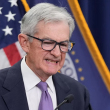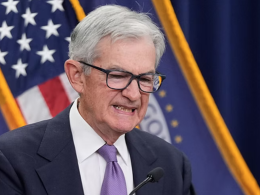by Lawrence Gillum, CFA, Chief Fixed Income Strategist, LPL Research
Early in the second Trump administration, tariff threats have revived market volatility. Recent Treasury yield curve movements reflect this uncertainty, with markets reacting to both threatened and postponed tariffs against key trading partners. Short-term yields rose as markets pushed back expectations for Federal Reserve (Fed) rate cuts, while long-term yields declined on economic slowdown concerns and potential trade tensions. These yield curve dynamics mirror patterns seen during the first Trump presidency
During the first Trump administration, trade tensions between the U.S. and China moved both interest rate and credit markets (more below). As tariffs escalated, two key trends emerged in the rates market. First, investors grew worried about economic growth, pushing them toward safer assets like U.S. Treasury bonds. This pushed long-term bond yields lower, even as the Fed kept raising short-term rates.
Second, international capital flows have shifted dramatically. China reduced its U.S. bond holdings by over $100 billion as tensions peaked. However, global uncertainty actually increased overall foreign demand for U.S. bonds, as investors sought safety from trade-related market volatility. Manufacturing slowdowns and supply chain disruptions reinforced these trends. As global factory activity declined, investors grew even more cautious, further compressing long-term yields. The result was a flatter and eventually inverted yield curve — where long-term rates fell below short-term rates.
The Treasury Yield Curve Flattened During Trump 1.0
2Y/10Y Curve Spread

Source: LPL Research, Bloomberg 02/05/25
Disclosures: Past performance is no guarantee of future results. All indexes are unmanaged and can’t be invested in directly.
Corporate credit markets have shown remarkable stability despite recent equity and rates volatility. High yield (HY) and investment grade (IG) option-adjusted spreads (OAS) remain near historic tights, with HY OAS in the 3rd percentile and IG in the 2nd percentile of their historical ranges (since 2002). Even CCC-rated bonds, the riskiest segment of high yield, trades in the 11th percentile — suggesting investors are showing unusual comfort with credit risk across the quality spectrum
A repeat of Trump 1.0 trade dynamics could bring heightened volatility to credit markets, which enter this period with significantly tighter spreads. During the 2018–2019 trade tensions, IG spreads widened 75 basis points from February 2018 cycle tights, while HY spreads expanded 225 basis points in just two months. While markets recovered in early 2019, volatility remained elevated throughout the year. Unlike 2019, when the Fed supported credit markets with rate cuts amid trade tensions, similar policy support appears unlikely given today's elevated inflation environment.
Corporate Credit Spreads Were Volatile Under Trump 1.0

Source: LPL Research, Bloomberg 02/05/25
Disclosures: Past performance is no guarantee of future results. All indexes are unmanaged and can’t be invested in directly.
Credit markets have been remarkably resilient over the past few years due to an economy that has also been remarkably resilient. But it wouldn’t surprise us if spread volatility increased from currently very low levels. And with spreads near all-time tights, we don’t like the risk/reward in corporate credit markets currently. Caveat emptor. As for the rates market, while tariffs could initially drive a lower trading range through safe-haven flows, any significant escalation could eventually push yields higher if tariffs prove inflationary, supply chains re-shore, and/or China reduces Treasury holdings more aggressively. The key will be monitoring the balance between growth fears (yields lower) and inflation risks (yields higher) in any new tariff regime. However Trump 2.0 plays out, fixed income investors may be in store for another bout of volatility.
Important Disclosures
This material is for general information only and is not intended to provide specific advice or recommendations for any individual. There is no assurance that the views or strategies discussed are suitable for all investors. To determine which investment(s) may be appropriate for you, please consult your financial professional prior to investing.
Investing involves risks including possible loss of principal. No investment strategy or risk management technique can guarantee return or eliminate risk.
Indexes are unmanaged and cannot be invested into directly. Index performance is not indicative of the performance of any investment and does not reflect fees, expenses, or sales charges. All performance referenced is historical and is no guarantee of future results.
This material was prepared by LPL Financial, LLC. All information is believed to be from reliable sources; however LPL Financial makes no representation as to its completeness or accuracy.
Unless otherwise stated LPL Financial and the third party persons and firms mentioned are not affiliates of each other and make no representation with respect to each other. Any company names noted herein are for educational purposes only and not an indication of trading intent or a solicitation of their products or services.
Asset Class Disclosures –
International investing involves special risks such as currency fluctuation and political instability and may not be suitable for all investors. These risks are often heightened for investments in emerging markets.
Bonds are subject to market and interest rate risk if sold prior to maturity.
Municipal bonds are subject and market and interest rate risk and potentially capital gains tax if sold prior to maturity. Interest income may be subject to the alternative minimum tax. Municipal bonds are federally tax-free but other state and local taxes may apply.
Preferred stock dividends are paid at the discretion of the issuing company. Preferred stocks are subject to interest rate and credit risk. They may be subject to a call features.
Alternative investments may not be suitable for all investors and involve special risks such as leveraging the investment, potential adverse market forces, regulatory changes and potentially illiquidity. The strategies employed in the management of alternative investments may accelerate the velocity of potential losses.
Mortgage backed securities are subject to credit, default, prepayment, extension, market and interest rate risk.
High yield/junk bonds (grade BB or below) are below investment grade securities, and are subject to higher interest rate, credit, and liquidity risks than those graded BBB and above. They generally should be part of a diversified portfolio for sophisticated investors.
Precious metal investing involves greater fluctuation and potential for losses.
The fast price swings of commodities will result in significant volatility in an investor's holdings.
This research material has been prepared by LPL Financial LLC.
Not Insured by FDIC/NCUA or Any Other Government Agency | Not Bank/Credit Union Deposits or Obligations | Not Bank/Credit Union Guaranteed | May Lose Value
For Public Use – Tracking: #693293
Copyright © LPL Research














